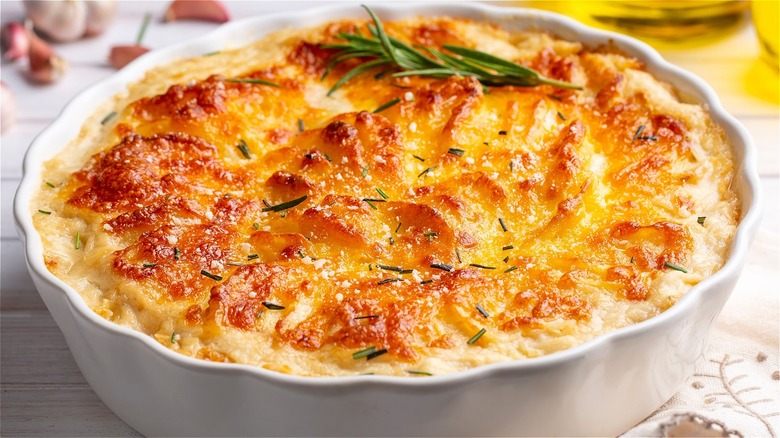The Undercooking Method For The Perfect Casserole
Everyone needs a few dishes in their repertoire that can be used to easily clear out the fridge, incorporating the leftovers you have so they don't go to waste. For example, a stir fry is a great way to use up small amounts of remaining vegetables, while pasta can be perfect for incorporating bits of meat and cheese.
For many Americans who love comfort food, however, the ever-adaptable casserole is one of the best ways to use up just about any ingredients. While some may argue about what exactly defines a casserole, in simplest terms, it's just some combination of ingredients that have been baked in the oven. The problem is, if not every ingredient bakes at the same rate, you risk soggy components in your casserole. One of the biggest culprits is noodles — if not done well, noodles within casseroles can easily become absolute mush by the time they emerge from the oven.
There's an easy solution to this dilemma. If you're cooking your noodles al dente before tossing them in the baking dish, as you don't want to risk a finished casserole with inedible undercooked noodles, stop. Instead, cook them for about 2 or 3 minutes less than you would for serving before adding to your dish. The oven cook time will finish the job, giving them the perfect texture — and it's far less of a hassle than calculating the exact time and liquid ratios needed for cooking casseroles where you simply mix in raw noodles.
More tips for the perfect casserole
Casseroles are an ideal way to stretch your food budget, as you can sprinkle in small quantities of more expensive ingredients with cheaper fillers like potatoes, rice and noodles. However, that doesn't mean you can just toss everything in a baking dish and hope for the best. If you want truly mouthwatering results, you need to put a bit of thought into the process.
For example, if you dread soggy vegetables, use the same hack as you do for the noodles — par cook the fresh veggies a bit before you toss them in the mix for a more satisfying final texture.
You also want to make sure you're controlling the moisture levels in your dish. This is why it can be helpful to pre-cook both meats that might release a lot of juices, and vegetables that have a ton of water in them — getting rid of that excess moisture before the bake time will ensure your final product isn't a watery mess.
Finally, texture and spice can both be huge game changers for bland, uninspiring casseroles. Make sure you're seasoning the casserole liberally at all stages in the process, and finish it off with something crunchy on the top, like fried onions or breadcrumbs, to break up the monotonous texture.

